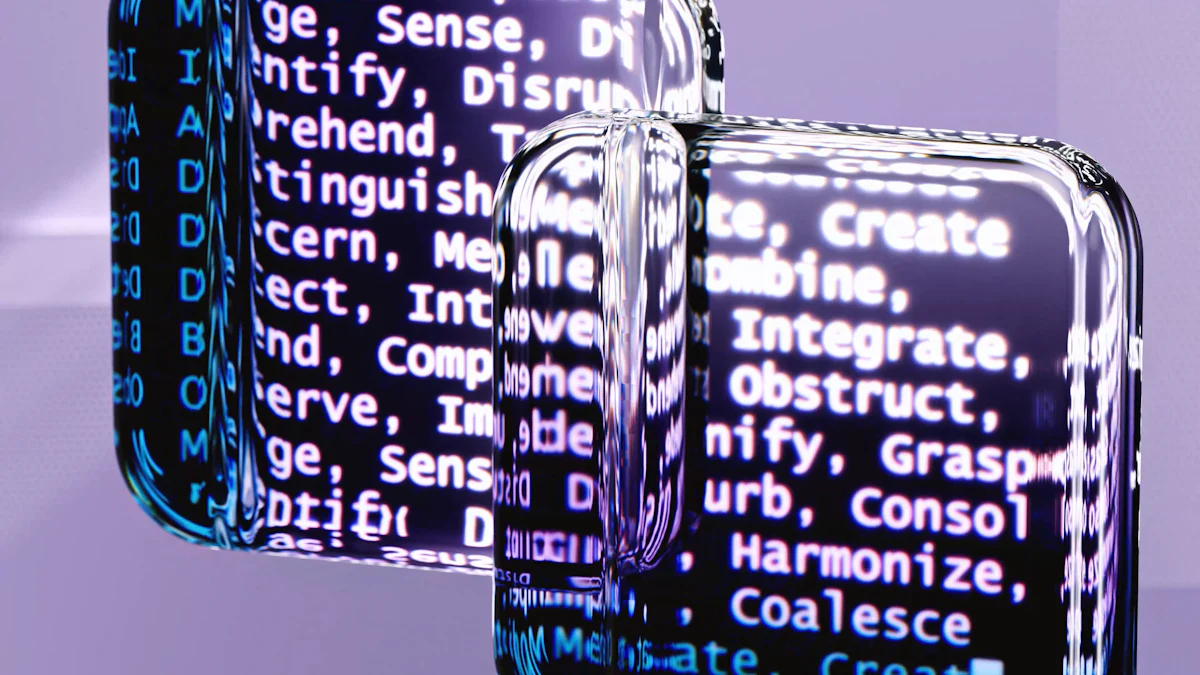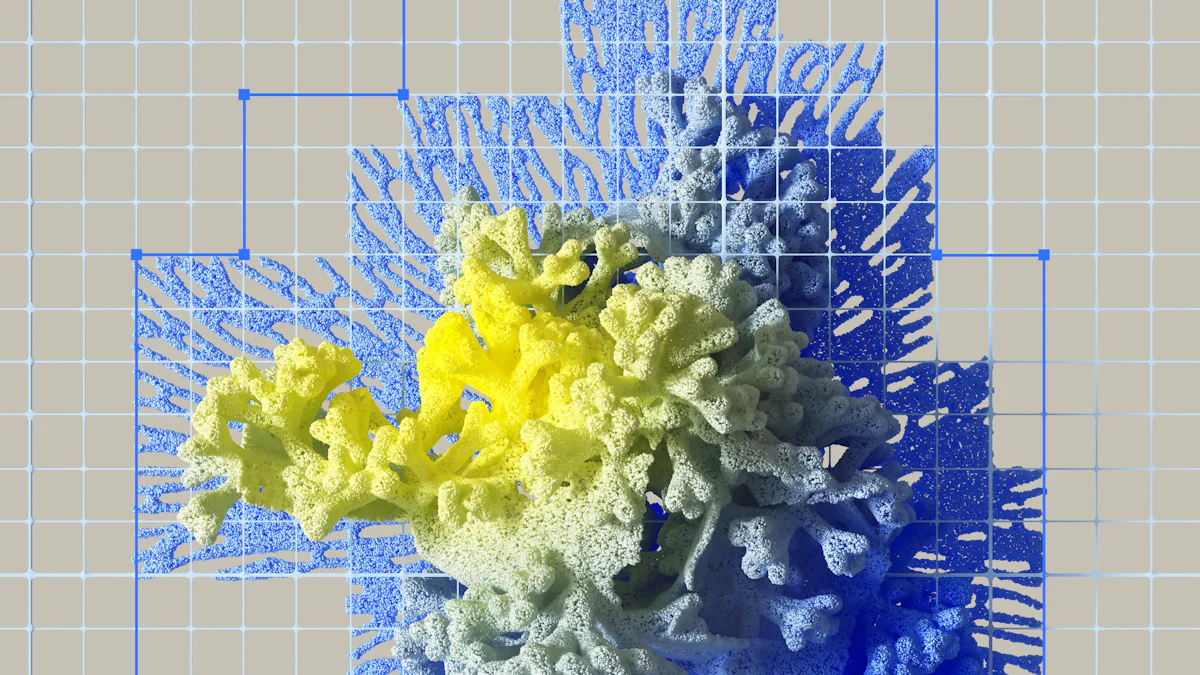Top Innovations in Next-Generation Generative AI

Generative AI represents a transformative leap in artificial intelligence, enabling machines to create content that mirrors human creativity. Innovation in AI is crucial as it drives advancements that reshape industries and enhance daily life. The AI market is projected to reach $1,339 billion by 2030, highlighting its rapid growth and potential. Exploring top innovations in Next-Generation Generative Models reveals how these technologies are revolutionizing fields such as art, healthcare, and communication, offering unprecedented opportunities for development and application.
Breakthroughs in Next-Generation Generative Models

Transformer Models
Evolution of Transformer Architecture
Transformer models have revolutionized the landscape of Next-Generation Generative Models. Initially introduced in 2017, these models have undergone significant evolution. They employ a mechanism known as self-attention, which allows them to weigh the importance of different words in a sentence. This capability enhances their understanding of context and meaning. Over time, researchers have refined transformer architectures, leading to more efficient and powerful models. These advancements have enabled transformers to handle larger datasets and perform complex tasks with greater accuracy.
Impact on Language Processing
Transformers have had a profound impact on language processing. They excel in tasks such as translation, summarization, and text generation. By leveraging their ability to understand context, transformers generate human-like text with remarkable fluency. This has opened new possibilities in fields like customer service, where chatbots can engage in natural conversations. Additionally, transformers have improved accessibility by providing real-time translation services, breaking down language barriers across the globe.
GANs (Generative Adversarial Networks)
Advancements in GAN Techniques
Generative Adversarial Networks (GANs) represent another breakthrough in Next-Generation Generative Models. Introduced by Ian Goodfellow in 2014, GANs consist of two neural networks: the generator and the discriminator. The generator creates synthetic data, while the discriminator evaluates it against real data. This adversarial process drives the generator to produce increasingly realistic outputs. Recent advancements have enhanced GAN techniques, making them more stable and efficient. Researchers have developed methods to improve training stability, allowing GANs to generate high-quality images and videos.
Applications in Image and Video Generation
They are renowned for their ability to create realistic images, making them valuable tools in industries such as entertainment and advertising.
Next-Generation Generative Models, including transformers and GANs, continue to push the boundaries of what AI can achieve. Their evolution and applications demonstrate the transformative potential of generative AI in various domains.
Enhancements in AI Training Techniques
Transfer Learning
Benefits of Transfer Learning in AI
Transfer learning has emerged as a pivotal technique in the realm of Next-Generation Generative Models. It allows AI systems to leverage pre-existing knowledge from one domain and apply it to another, significantly reducing the time and resources required for training. This approach enhances the efficiency of generative models by enabling them to learn from smaller datasets while maintaining high accuracy. Businesses benefit immensely from transfer learning, as it facilitates the customization of AI solutions to meet specific needs, thereby driving innovation and economic growth.
Case Studies of Successful Implementations
Several case studies highlight the successful implementation of transfer learning in Next-Generation Generative Models. For instance, a leading tech company utilized transfer learning to develop a generative model for personalized marketing campaigns. This model analyzed customer preferences and generated tailored content, resulting in a 30% increase in engagement rates. Another example involves a healthcare startup that employed transfer learning to create a model for early disease detection. By transferring knowledge from existing medical datasets, the model achieved remarkable accuracy in diagnosing rare conditions, showcasing the transformative potential of transfer learning in diverse fields.
Reinforcement Learning
Integration with Generative Models
Reinforcement learning plays a crucial role in enhancing Next-Generation Generative Models. It involves training models through trial and error, allowing them to learn optimal strategies by interacting with their environment. When integrated with generative models, reinforcement learning enables the creation of more sophisticated and adaptive AI systems. These models can generate content that evolves based on user feedback, leading to more personalized and engaging experiences. The integration of reinforcement learning with generative models represents a significant advancement in AI training techniques, pushing the boundaries of what these models can achieve.
Real-World Applications
The real-world applications of reinforcement learning in Next-Generation Generative Models are vast and varied. In the gaming industry, reinforcement learning has been used to develop AI opponents that adapt to players' strategies, providing a more challenging and immersive experience. In finance, generative models powered by reinforcement learning assist in predicting market trends and optimizing investment strategies. Additionally, in autonomous vehicles, these models contribute to decision-making processes, enhancing safety and efficiency. The versatility of reinforcement learning underscores its importance in advancing generative AI technologies across multiple sectors.
Emerging Applications of Generative AI
Creative Industries
AI in Art and Music Creation
Generative AI is transforming the creative industries by enabling machines to produce art and music that rival human creations. Artists and musicians use AI tools to explore new styles, pushing the boundaries of creativity. AI algorithms analyze vast datasets of existing artworks and compositions, learning patterns and styles. They then generate original pieces that reflect these influences. This process allows artists to experiment with new ideas and collaborate with AI as a creative partner.
*AI examples already hint at these possibilities, but future advancements will allow for even more seamless integration, making AI an indispensable tool in the creative industry.*
In music, AI can compose melodies, harmonize tunes, and even create entire symphonies. Musicians use these AI-generated compositions as inspiration or as a foundation for further development. This collaboration between humans and machines opens up new avenues for artistic expression and innovation.
Innovations in Content Generation
Content generation has seen significant advancements with the integration of generative AI. Writers and content creators leverage AI to produce articles, stories, and scripts with remarkable speed and accuracy. AI models analyze existing content to understand language nuances, tone, and style. They then generate new content that aligns with these parameters, ensuring consistency and quality.
AI-powered tools assist in creating personalized content for marketing campaigns, enhancing engagement and customer experience. By analyzing user data, AI generates tailored messages that resonate with individual preferences. This level of personalization was previously unattainable, highlighting the transformative potential of generative AI in content creation.
Healthcare and Medicine
AI in Drug Discovery
Generative AI is revolutionizing drug discovery by accelerating the development of new medications. Traditional drug discovery processes are time-consuming and costly, often taking years to bring a new drug to market. AI models analyze vast datasets of chemical compounds and biological interactions, identifying potential drug candidates with greater efficiency.
Generative AI is making waves in medicine, especially in creating new drugs, showcasing the powerful capabilities of AI technology.
AI algorithms simulate chemical reactions and predict the effectiveness of compounds, reducing the need for extensive laboratory testing. This approach speeds up the discovery process and increases the likelihood of finding effective treatments for various diseases. Pharmaceutical companies are increasingly adopting AI-driven methods to enhance their research and development efforts.
Personalized Medicine and AI
Personalized medicine is another area where generative AI is making a significant impact. AI models analyze patient data, including genetic information, medical history, and lifestyle factors, to develop tailored treatment plans. This personalized approach ensures that patients receive the most effective therapies based on their unique characteristics.
AI-driven tools assist healthcare professionals in diagnosing conditions and predicting disease progression. By analyzing patterns in patient data, AI models provide insights that guide treatment decisions. This level of precision medicine improves patient outcomes and reduces the risk of adverse effects.
Generative AI continues to reshape the healthcare landscape, offering innovative solutions for drug discovery and personalized medicine. As AI technology advances, its applications in healthcare will expand, providing new opportunities for improving patient care and treatment outcomes.
Generative AI has introduced groundbreaking innovations, reshaping various fields. Key advancements include transformer models and GANs, which have revolutionized language processing and content generation. The future of generative AI looks promising as it continues to expand its capabilities. Researchers predict that AI technology will transform industries, leading to new opportunities and challenges. As AI adoption grows, it will necessitate reskilling in the workforce, reshaping roles and responsibilities. Generative AI's ability to create original content holds significant implications for the future, offering endless possibilities for creativity and innovation.
See Also
The Future of Creativity and Innovation with Generative AI
Essential Generative AI Models for 2024
